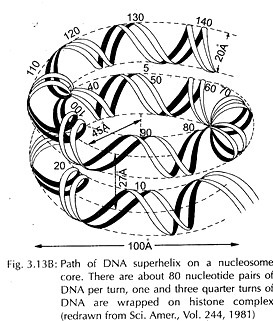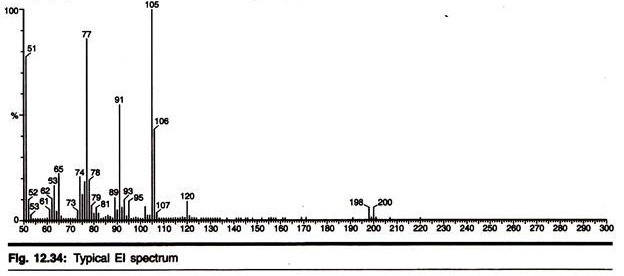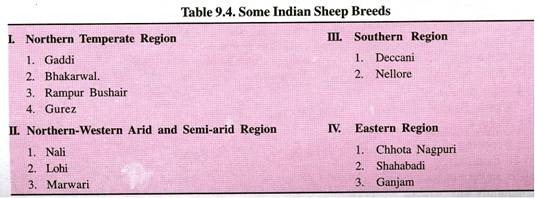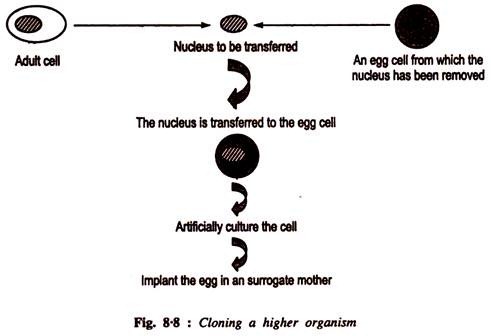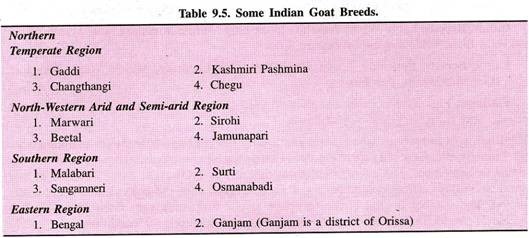ADVERTISEMENTS:
Gregor Johann Mendel (1822-1884) is called as Father of Genetics. He was born in 1822 to a family of poor fathers an area that is now part of Czech Republic.
His father had a great love for plants and this influenced Mendel a lot. As he grew older, he became interested in plant hybridization.
After completing his school education Mendel joined University to take up a two year course in Philosophy. He then entered the Augustinian Monastery at Brunn and was ordained a priest in 1847. There he continued his interest in plant hybridization. In 1849 Mendel got a temporary position in a school, served there for one year and left in order to join the University of Vienna for training in physics, mathematics and the natural sciences.
ADVERTISEMENTS:
This enabled him to design and analyse precise experimental work which he conducted at the monastery. In 1854 Mendel again took up the profession of a teacher and continued there for fourteen years. During this long period he conducted his famous garden pea experiments in the monastery garden.
His experiments were in fact the extension and development of hybridization experiments on pea conducted by earlier workers like Knight (1799) and Goss (1824). Another important worker J. Kolreuter (1733-1806), a German botanist performed hybridization experiments in tobacco and demonstrated that the hybrids may resemble one or other parent or may be intermediate between the two.
Kolreuter further stated that reciprocal crosses give similar results. His view was accepted by the then established scientists like Gartner (1772-1850), Naudin (1815-1899) and Darwin (1809-1882). However, these workers could not give a numerical treatment to their results as Mendel did in 1866 and hence could not understand the mechanism of inheritance.
Mendel conducted his historic experiments with garden pea (Pisum sativum) in the monastery garden for about nine years (1856-1864) and published his results in a less known journal-The Annual proceedings of the Natural History Society of Brunn in 1865.
ADVERTISEMENTS:
Unfortunately, his out-standing contributions failed to attract the attention of the scientific world of that time and remained unknown till 1900 when his papers were rediscovered by three different scientists from three different countries of Europe, while working independently on heredity in plants. They were Hugo Devries of Netherlands, Karl Correns from Germany and Eric Von Tshermak of Austria.
Mendel’s Experiments:
Mendel performed cross breeding experiments on garden pea (Pisum sativum). He studied the inheritance of seven different pairs of contrasting characters in this plant but considered only one pair at a time. He crossed two pea plants having contrasting characters (for example tall and dwarf pea plants) by artificial pollination and obtained the hybrids. The resulting hybrid plants were then crossed with each other. He obtained the data from these crosses and analysed the results carefully.
Why Mendel Selected Pea As His Experimental Material:
Mendel selected garden pea as his experimental material due to the following advantages:
1. Pea plant is easy to grow and interbreed.
2. Peas reproduce and grow to maturity in a season (an annual plant). Because of short life cycle several generations can be produced within a short period.
3 The flowers are bisexual containing both male and female parts. They are self fertilising in nature.
4. The pea plants have a number of contrasting characters.
ADVERTISEMENTS:
5. It is easy to hybridize because pollen from one plant can be introduced into the stigma of another plant by removing anthers.
6. Because of easy self fertilization, it is easy to get pure lines for several generations.
7. It produces fertile hybrids. This enabled Mendel to continue his experiments for generations.
For his experiment Mendel initially selected pea plants with contrasting characters such as tall and dwarf. These plants were pure or true breeding for particular character. For example, to get a pure line for tallness of the stem, he self-fertilized a tall pea plant for several generations till the resulted offspring always produced only tall plants.
ADVERTISEMENTS:
Likewise, he got genetically pure variety of dwarf pea plants by adopting the same technique. These true breeding plants (tall and dwarf) formed the parent (P1) generation. Since garden pea is self-fertilizing, the panthers have to be removed before maturity. This operation of removal of anthers is called emasculation.
The stigma is protected against any foreign pollen with the help of bag. The pollen, then at the dehiscence stage, is brought from the plant to be used as a male parent and is dusted on the feathery stigma of the emasculated flower. At the time of this kind of artificial pollination, the poll n should be mature and stigma should be receptive.
For each of the seven pairs of characters, plants with one alternative trait were used as female and those with the other alternative as male. Reciprocal crosses were also made. The population obtained as a result of crossing parent plants having contrasting characters is called the first filial generation or F1 (filial means progeny). The F1 plants when self fertilised produce second filial generation plants or F2 plants. Similarly F3, F4 etc. can be produced.
Reasons for Mendel’s Success:
Mendel’s success may be attributed to a combination of luck, foresight, mathematical background and his scientific aptitude.
ADVERTISEMENTS:
The reasons for Mendel’s success are as follows:
1. Mendel studied the inheritance of one character at a time unlike his predecessors who considered the organism as a whole.
2. Lie carried out his experiments upto F2 and F3 generations.
3. His knowledge in statistics helped him to maintain accurate records of all the experiments of findings and analysed them carefully.
ADVERTISEMENTS:
4 He grew pure lines in separate plots and conducted experiments by crossing two plants from pure strains.
5. The parent plants undergoing crossing belonged to pure lines and had sharply visible contrasting characters.
6. He selected genetically pure plants for his experiments by performing a series of sell crossing tests.
7 All this genetical experiments were conducted with utmost care and meticulous planning.
Mendelian Laws of Heredity:
1. Principle of Unit Characters:
Mendel assumed that the unit of hereditary characters is the factors of determiners which occur in pairs. One of each comes from the mother while the other comes from the father. The unit character or factor is now called as gene.
ADVERTISEMENTS:
2. Law of Dominance:
When a pair of contrasting characters (or allelomorphic characters or alleles) are present together, only one of them expresses itself and the other remains suppressed of hidden The character which is expressed (or is visible) is called as dominant and the character which remains hidden is termed as recessive.
3. Law of Segregation or Purity of Gametes:
The allelic factors or genes present together in the hybrids segregate (separate) from one another and are placed in different gametes in the next generation.
4. Law of Independent Assortment:
When two or more pairs of contrasting characters are taken into consideration in a cross, each factor, assort or place itself independently of the other (lining its passages from on; generation to the other.
Mendelian Terminology:
ADVERTISEMENTS:
1. Genotype and Phenotype:
Genotype refers to the genetic makeup or genetic constitution of an organism. Phenotype indicates the external appearance of an organism. TT and Tt are phenotypically same tall plants but genotypically different as one is pure tall (TT) and other is hybrid tall (Tt).
2. Homozygous and Heterozygous:
Every organism possesses two genes (alleles) for every character. If in an organism the two genes (alleles) for a particular character are identical (for example TT or tt), it is said to be pure or homozygous (homo = the same, zygo = a pair). If the organism possesses contrasting genes (alleles) for a particular character (for example Tt), it is said to be impure or heterozygous (hetero = different, zygo = a pair).
3. Dominant and Recessive:
A heterozygote possesses two contrasting genes (say ‘Tt’), but only one of the two is able to express itself (tallness), while the other remains hidden (dwarfness). The gene which is able to express in 1, hybrid (here ‘T’) is known as dominant gene, while the other gene which is unable to express itself (here’t’) in the presence of dominant gene is called as recessive gene.
4. Allele or Allelomorph:
Mendel stated that two genes (factors) representing two alternatives of a character are present on two separate chromosomes of a homologous pair but at the same loci or position. For example, in a gene pair Tt, T is present on one chromosome and t on the other chromosome but at the same locus or position. Each of them is called an allel to the other (T is an allel to t and vice versa).
5. Gene:
It is the unit of inheritance representing a particular characteristic. It is located in the chromosome and formed of a DNA segment. It was termed as factor or determiner.
6. Hybrid:
A progeny resulting from a cross between two parents differing at least in a single character.
7. Reciprocal Cross:
It is the second cross involving same genotypes as first cross but the sexes are reversed. If the first cross is Tall (female) x Dwarf (male), then the second or reciprocal cross will be Tall (male) x Dwarf (female). 
Monohybrid Cross:
In a monohybrid cross the two parents differ through a single character. Mendel took a tall pea plant and crossed with a dwarf plant. He transferred the pollen grains of tall pea plants and placed them on the stigma of the dwarf pea plant and vice versa. To prevent self pollination he earlier removed all stamens from the flowers of the dwarf plant. Mendel noticed that all the progenies of F) or first filial generation were tall plants. This gave him the clue to state the Law of dominance.
According to this law, out of a pair of contrasting characters (tallness and dwarfness) one character (tallness) appeared in the F, generation and the other character (dwarfness) remained hidden or suppressed. The character which appeared in Ft generation is called dominant and the other character remained hidden is called recessive character. These two contrasting characters are known as allelomorphic characters or allelomorphs or alleles (Fig. 5.2).
Mendel now allowed the plants to self pollinate and produce F2 or second filial generation of plants. Among F2 plants he observed tall as well as dwarf plants in the ratio 3:1. This ratio is monohybrid ratio. The recessive character (dwarfness) which was hidden in the F1 generation appeared in F2 generation.
Among the F2 tall plants 1/3rd were pure tall and the remaining 2/3rd were hybrid tall behaving like the plants of F2 generation. The recessive dwarf plant bred true. Thus, the F2 ratio are classified into two categories: Phenotypic ratio (3 tall: 1 dwarf) and Genotypie ratio (1 pure tall: 2 hybrid tall: 1 pure dwarf).
In the parental generation both tall (TT) and dwarf (tt) plants have similar alleles of gene and hence called homozygous plants. The F1 plants have different alleles of the same gene (Tt) and hence known as heterozygous plants. Mendel represented the dominant factor through the capital letter and recessive factor by means of small letter. Thus, pure tall plant will be TT and dwarf plant will be represented by tt.
Law Of Segregation or Purity of Gametes:
According to this law the F1 plants have both the factor T and t which never fuse or mix. When such plants form gametes, the factors T and l separate from each other and enter separate zygotes. Thus, in the F2 generation dwarf plant appears, besides true tall and hybrid tall plants.
Di-hybrid Cross:
In a di-hybrid cross the parents differ through two characters. Mendel conducted a cross between a true breeding Round Yellow plants (RRYY) with true breeding Wrinkled Green plant (rryy). Round and Wrinkled are the shapes of seed coat whereas Yellow and Green are the colours of the seed coat.
Mendel observed the seeds of the Fj plants were all Round and Yellow. This showed Round and Yellow were dominant over Wrinkled, Green. In the Fv generation four types of combinations were observed such as Round Yellow, Wrinkled Yellow, Round Green and Wrinkled Green. Thus the above types of offspring’s of F2 generation were produced in the ratio of 9:3:3:1. This ratio is called Di-hybrid ratio (Fig. 5.3).
The results can be represented as follows:
Mendel represented round character of seed by R and wrinkled by r. Similarly, he represented the yellow character by Y and green by y.
Explanation:
In his dihybrid cross experiment Mendel observed round and yellow characters are dominant over wrinkled and green so that all the F1 offspring’s are round and yellow. In the F2 generation, he noticed an allele (dominant or recessive) of a given character freely combines with either one (dominant or recessive) of the alleles of another character. Hence, a dominant allele of a character combines, not only with the dominant, but also with the recessive allele of another character.
Law of Independent Assortment or the Law of Freedom Recombination:
In the dihybrid cross, allele R (round) of seed shape character combines or assorts, not only with the dominant allele Y (yellow) but also with the recessive allele y (green) of the seed colour character. Thus, allele R assorts freely with either Y or y allele but independent of the allele r (wrinkled shape) and vice versa during F2 generation.
Trihybrid Cross:
In a trihybrid cross the parents differ through three characters. Mendel crossed homozygous tall, round and yellow (TT RRYY) with dwarf, wrinkled and green (ttrryy). All the F1 plants were tall round and yellow (TtRrYy).
On self fertilization these hybrid plants produced:
(i) 27 tall, round and yellow
(ii) 9 tall, round and green
(iii) 9 tall, wrinkled, yellow
(iv) 9 dwarf, round, yellow
(v) 3 tall, wrinkled, green
(vi) 3 dwarf, round, yellow
(viii) 3 dwarf, wrinkled, yellow
(viii) 1 dwarf, wrinkled, green.
Mendelian Inheritance in Animals:
Mendel worked on pea plants hut the application of his laws on animals were carried out In his successors.
Monohybrid Cross:
Coat Colour in Guinea Pig:
When a pure (homozygous) black guinea pig (BB) is crossed with a pure white guinea pig (bb), all the F1 offspring’s (Bb) are found to be black. It means black colour is dominant to white colour in guinea pig and FL black offsprings (Bb) are heterozygous. Here the gene for black colour is represented by B and for recessive white colour by b. When the F1 heterozygous are bred among themselves, individuals of F2 generation are produced. The Fv phenotypic ratio is 3 black: 1 white whereas the F2 genotypic ratio is pure black 1: heterozygous black 2: Pure white 1 (Fig. 5.4).
Dihybrid Cross:
In guinea pig black coat (BB) is dominant to white coat (bb) and short hair (SS) is dominant to long hair (ss). When a homozygous black short haired male guinea pig is crossed with a white long haired female, all the F, offspring’s are black short haired. This shows dominance of black coat to white coat and dominance of short hair to long hair.
When the F1 hybrids individuals are allowed to interbreed a F2 generation consisting of four types of individuals are produced in the following ratio: black short 9: black long 3: white short 3: white long 1: This ratio clearly explains Mendel’s law of independent assortment (Fig. 5.5).
Back Cross and Test Cross:
In the Mendelian inheritance F1 hybrids (Tt) can be crossed with either of the parents (TT or tt). It is known as back cross. When the F1 hybrids (Tt) are crossed with the dominant parents (TT) all the F2 offspring’s develop dominant characters (tall). But when F1 hybrids (Tt) are crossed with recessive parent (tt), 50% of the F2 offspring’s develop recessive character (dwarfness). It is also known as test cross. Test cross is used to determine the unknown genotype of an individual (whether the dominant character is homozygous or heterozygous).
Interaction of Genes:
Following the rediscovery of Mendelian principles of heredity in 1900, scientists all the over the world tried to verify these laws by conducting experiments on different species of plants and animals. To their surprise it was found that Mendelian principles did not come out true universally, rather there were many cases of exceptions to this.
The allelic genes, instead of behaving as dominant and recessive, interact in the F1 hybrid to produce a new character. In some cases more than one pair of genes may influence the same character. In certain cases two or more genes were transmitted together generation after generation without being separated i.e., there were no segregation or free assortment of genes as seen in Mendelian principles. In this way many such exceptions were observed which are now called as deviations of Mendelian principles.
Incomplete Dominance:
Four-O’ clock plants (Mirabilis jalapa) producing red flowers (RR) when are crossed with plants having white flowers (rr), the F1 plants (Rr) produce pink flowers. When such F1 hybrid plants are self fertilized or crossed, the resulted F2 plants are of 3 kinds based on the colour of the flower they bear. The phenotypic ratio of plants with red: pink: white colour is respectively 1:2:1. The effect of dominant character i.e., red colour is incomplete in the hybrid pink flowered plants due to the diluting effect of recessive character i.e., white colour.
Codominance:
In Andalussian fowl when a pure black is crossed with a pure white bird, the F1 hybrid is blue. When such blue hybrids are crossed among themselves the F2 ratio of the fowl for black: blue: white was 1: 2: 1. In the F1 hybrid the genes for black and white colour produced their effects equally resulting in blue colour. Such genes are codominant genes unlike dominant and recessive genes as proposed by Mendel.


